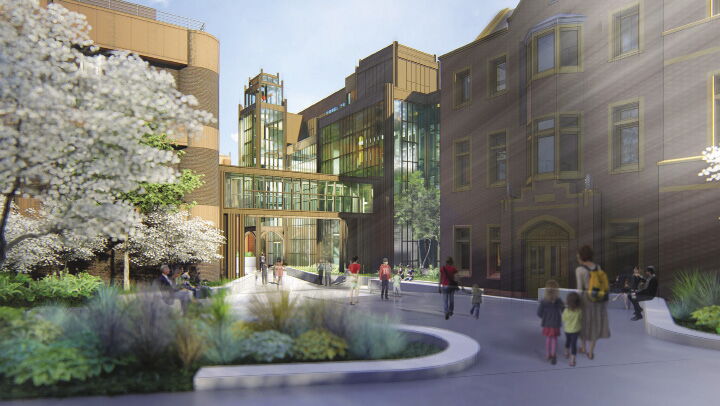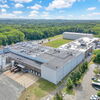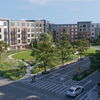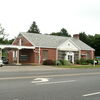Processing Your Payment
Please do not leave this page until complete. This can take a few moments.
-
News
-
Editions
-
- Lists
-
Viewpoints
-
HBJ Events
-
Event Info
- 2024 Economic Outlook Webinar Presented by: NBT Bank
- Best Places to Work in Connecticut 2024
- Top 25 Women In Business Awards 2024
- Connecticut's Family Business Awards 2024
- What's Your Story? A Small Business Giveaway 2024 Presented By: Torrington Savings Bank
- 40 Under Forty Awards 2024
- C-Suite and Lifetime Achievement Awards 2024
- Connecticut's Health Care Heroes Awards 2024
-
-
Business Calendar
-
Custom Content
- News
-
Editions
View Digital Editions
Biweekly Issues
- April 15, 2024
- April 1, 2024
- March 18, 2024
- March 4, 2024
- February 19, 2024
- February 5, 2024
- January 22, 2024
- January 8, 2024
- Dec. 11, 2023
- + More
Special Editions
- Lists
- Viewpoints
-
HBJ Events
Event Info
- View all Events
- 2024 Economic Outlook Webinar Presented by: NBT Bank
- Best Places to Work in Connecticut 2024
- Top 25 Women In Business Awards 2024
- Connecticut's Family Business Awards 2024
- What's Your Story? A Small Business Giveaway 2024 Presented By: Torrington Savings Bank
- 40 Under Forty Awards 2024
- C-Suite and Lifetime Achievement Awards 2024
- Connecticut's Health Care Heroes Awards 2024
Award Honorees
- Business Calendar
- Custom Content
Midnight at the Museum: Yale’s Peabody goes dark this spring for a three-year, $200 million restoration
 RENDERING/CENTERBROOK ARCHITECTS & PLANNERS
Architect’s rendering of the new construction, which will house 15,000 square feet of new gallery space and connect the Peabody’s existing footprint to Science Hill.
RENDERING/CENTERBROOK ARCHITECTS & PLANNERS
Architect’s rendering of the new construction, which will house 15,000 square feet of new gallery space and connect the Peabody’s existing footprint to Science Hill.
It will be business as usual as Yale’s Peabody Museum of Natural History undergoes a $200 million renovation beginning this spring. School and camp visits will continue at the Yale West Campus in Orange. Scientists will be busy off-site researching natural history with a collection of some 13 million items. And the dinosaurs are on their way to Ontario to be remounted to better reflect the most up-to-date scientific knowledge (the tail of the Great Hall’s Brontosaurus, for example, had been mounted upside down for nearly a century).
The renovation, some 15 years in planning, is being funded by a landmark $160 million gift from Edward P. Bass (Yale ’67) of Fort Worth, Tex. This milestone commitment is among the most generous gifts to Yale and is the largest known gift ever made to a U.S. natural history museum.
Centerbrook Architects will lead the design phase, working with Reich + Petch Design International of Toronto, while Turner Construction will oversee the build phase. When work is completed in 2023, the museum will feature 50 percent more gallery space and new lighting, audio-visual and casework systems. The Peabody will be able to support an even more dynamic exhibit program, featuring a greater diversity of voices and perspectives. With 15,000 square feet of new galleries across three floors, visitors will be able to view objects from the collections that have never been exhibited before. Display systems will be designed to make it easy to rotate content and provide new exhibits.
Founded in 1866, the Peabody is one of the oldest and largest university-based natural history collections in the world. The renovation means the vast collection of more than 13 million objects and specimens will be made accessible to a wider range of faculty, students and visitors.
The Dinosaur and Mammal Halls closed in December, but the other galleries, including the gem and mineral gallery, David Friend Hall, will be open to the public through this June 30.
When it reopens, the Peabody’s vertebrate paleontology collection — home of the first Brontosaurus, Stegosaurus and Triceratops known to science — will continue to be one of the most scientifically significant collections in the world.
“We received a $160 million lead gift, which was beyond generous and unprecedented,” Peabody Director David Skelly says. Though he says Yale doesn’t discuss project costs, he did say there was still a “little ways to go” to achieve the full funding, so he’s been spending a lot of his time on the road, appealing for donations from alumni, Yale clubs and philanthropists in the broader community.
Skelly says. “I ask myself, ‘Why is the public coming in the doors? Why is the faculty using these collections?’ The answer is to gain access to natural history in a compelling way that helps us understand that the world is made of objects that are evidence to scientists. People show up to places like ours for a moment that can’t happen anywhere else.”
The Peabody typically displays only about 0.04 percent of the objects in its collection. The remainder, notes Skelly, could fill multiple other museums with objects that visitors want to see. “Most of the collection are items that people don’t want to see, but are important to scientific research, which is the real purpose of the museum,” Skelly notes.
The new Peabody will feature next-gen Bluetooth headset systems that put the visitors in the driver’s seat. In addition to signage describing each display, the headsets will sense the angle of the visitor’s head and what they are viewing to queue narrative about that display. New and larger spaces will be available for the Yale community, including classrooms, a study gallery, student-curated exhibition space and a research studio. Dedicated spaces for the Yale Institute for Biospheric Studies and the Max Planck Yale Center for Biodiversity Movement & Global Change will bring together students and faculty from across academic departments to collaborate on environmental research. The 1926 main building will also be insulated.
Carol DeNatale, the museum’s project director, is overseeing collaboration between Yale, the museum, architects and contractors.
“My real job is to make sure that the Peabody Museum as an institution gets the functionality and the requirements out of the building itself that are paramount to their program,” she explains. “Although our building is closing, the programs that we run do not stop. We will simply hold them in other facilities.”
Up Science Hill behind the Peabody, for instance, the brand new Yale Science Building houses a 500-seat lecture Marsh Lecture Hall, also funded by Bass.
“We installed an exhibit in the lobby surrounding the lecture hall that was real dinosaur specimens,” DeNatale says. “That space will be used for other things as well: labs, scientific classes. It's a place where we can do a lot of the programming that we're accustomed to doing now.”
“When the big public event days — Fiesta Latina and the MLK festival days — we get thousands of visitors,” DeNatale explains. “Those will continue [during the renovation]. But we're just going to utilize different resources on campus and maybe in the city at large. The new Schwarzman Center at Yale will be coming online. That's meant to be a community center. We're working with them to make sure that we could from time to time have program space there as well.”
The multi-phase construction project will begin this spring and by the middle of 2022 construction will be winding down. It will take an entire year to reinstall the exhibits into the new building.
“You can imagine it's quite a complex task to bring the dinosaurs back in and reassemble them, as well as putting up brand new exhibits in all spaces,” DeNatale says.
The new Peabody will be Yale’s first LEED Sustainable Gold Version 4 building, which represents some of the highest standards for sustainable construction and operation. The latest version looks beyond energy consumption ties in wellness-related issues for both the staff and the public at large. It also considers mobility issues including bike racks and parking. Fundamental goals are related to both sustainability and accessibility.
“On Sachem Street for instance, we are going to have a new bus pull-off. School buses — we get hundreds of them — don't have a safe way to disembark now,” DeNatale explains. “They're literally stopping in the street. We're going to create a new pull-off with a ramp area up to an accessible entrance.”
A brand new structure will rise in the empty courtyard behind the Peabody which will include a new entrance onto a patio between the Peabody and Kline Biology Tower, creating what DeNatale describes as a wonderful community environment that also connects up to the new Yale Science Building.
A new entrance on the north side will welcome Yale students, faculty and researchers, to connect with Science Hill and heavily traveled pathways of Yale students.
Without question, a complex and fascinating project.
“They're charged with building a brand new building that is abutted by three existing buildings,” DeNatale explains. “It'll be a bit of a spectacle and I think people are going to have fun watching the construction project unfold.” Turner Construction will set up a giant tower crane in the middle of three buildings.
Centerbrook Architects’ Mark Simon explains that the project has been in the works for nearly 15 years, including master plans evolving slowly through three museum directors.
“There are incredible complexities,” Simon says. “Because we are putting in the addition in the middle of the core of the block, we can now create circular pathways for people on every floor to move. They free up the way you move through the building and give you a lot more options of how to see what's there. So we're improving circulation, we're making it much more accessible.”
He’s excited to see the project happening at last.
“I have to say that each time we redid the plan, it got better,” he explains. “It got more efficient. It makes us all feel really good that the work was really worth it.” Simon adds that the $160 million Bass gift didn’t change how they were planning, it just allowed them to ‘“do it all” — plus fund an endowment to maintain the museum.
“This has been a very collaborative process and we had weekly meetings of up to 20 people for the past two years,” Simon says. “I think we're just really proud to be a part of this because the Peabody has such a distinguished history.
“It is so important to the history of science — not just in this country, but worldwide,” he adds. “It's the dream of a lifetime for an architect to be able to work on this. This is really happening.”

2022 Giving Guide
This special edition informs and connects businesses with nonprofit organizations that are aligned with what they care about. Each nonprofit profile provides a crisp snapshot of the organization’s mission, goals, area of service, giving and volunteer opportunities and board leadership.
Learn more
Subscribe
Hartford Business Journal provides the top coverage of news, trends, data, politics and personalities of the area’s business community. Get the news and information you need from the award-winning writers at HBJ. Don’t miss out - subscribe today.
Subscribe
2024 Book of Lists
Delivering Vital Marketplace Content and Context to Senior Decision Makers Throughout Greater Hartford and the State ... All Year Long!
Read Here-
2022 Giving Guide
This special edition informs and connects businesses with nonprofit organizations that are aligned with what they care about. Each nonprofit profile provides a crisp snapshot of the organization’s mission, goals, area of service, giving and volunteer opportunities and board leadership.
-
Subscribe
Hartford Business Journal provides the top coverage of news, trends, data, politics and personalities of the area’s business community. Get the news and information you need from the award-winning writers at HBJ. Don’t miss out - subscribe today.
-
2024 Book of Lists
Delivering Vital Marketplace Content and Context to Senior Decision Makers Throughout Greater Hartford and the State ... All Year Long!
ABOUT
ADVERTISE
NEW ENGLAND BUSINESS MEDIA SITES
No articles left
Get access now
In order to use this feature, we need some information from you. You can also login or register for a free account.
By clicking submit you are agreeing to our cookie usage and Privacy Policy
Already have an account? Login
Already have an account? Login
Want to create an account? Register
Get access now
In order to use this feature, we need some information from you. You can also login or register for a free account.
By clicking submit you are agreeing to our cookie usage and Privacy Policy
Already have an account? Login
Already have an account? Login
Want to create an account? Register






0 Comments